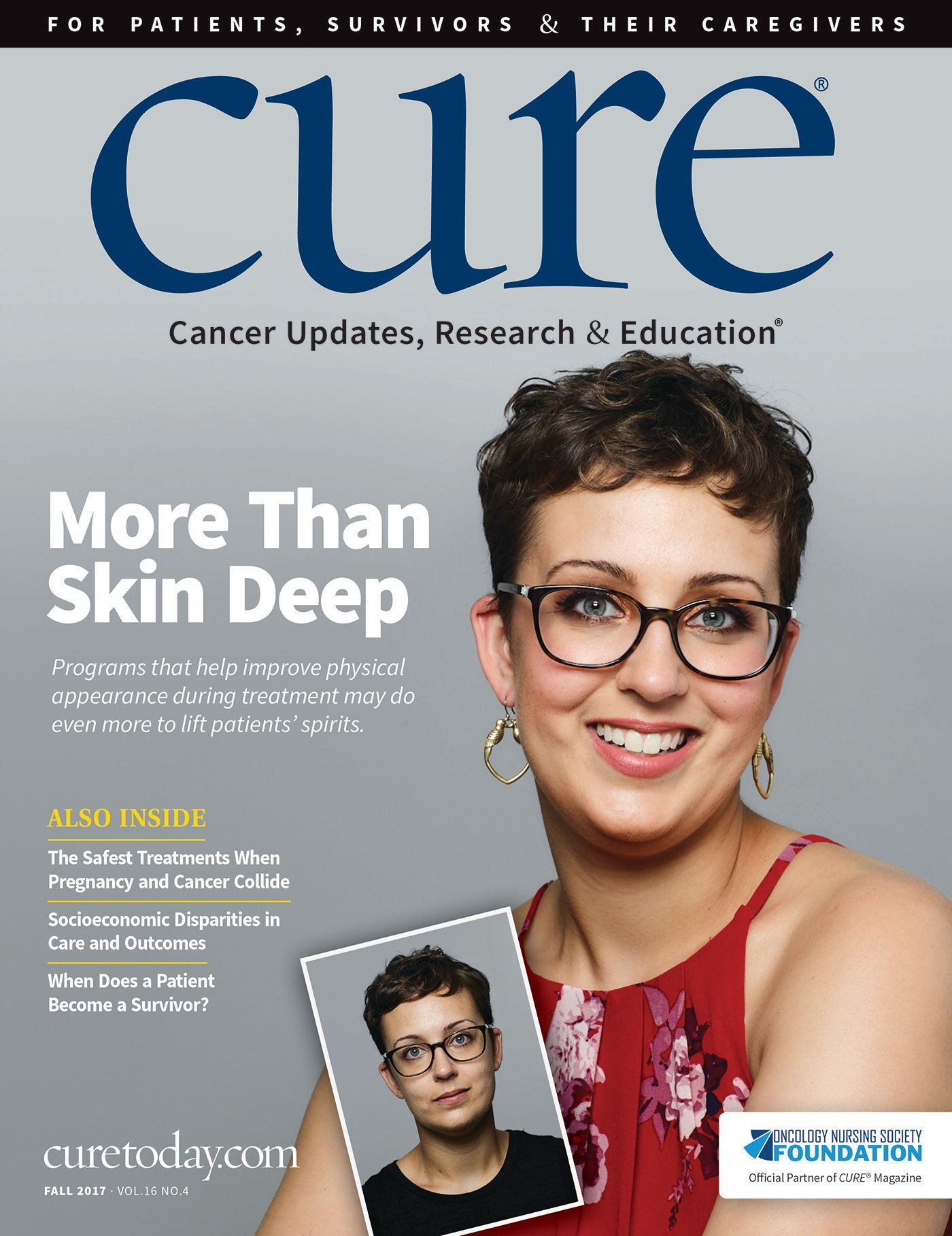Publication
Article
CURE
Moving Forward With Confidence and Dignity
Author(s):
In the fall issue of CURE, several feature stories have a commonality involving key principles of humanity that are often compromised for those living with cancer.
IN THIS ISSUE OF CURE®, several feature stories have a commonality involving key principles of humanity that are often compromised for those living with cancer.
We all strive to see our positive selves when we look inward and when we project ourselves outward. We seek acceptance in our families and communities. We expect to be treated fairly, regardless of our heritage and background — both in health and in sickness. Programs that allow patients to exert control over their appearance, and even to experiment with new looks they may have never considered, reflect both the dignity and whimsical moments that can be stolen during the cancer experience. Look Good Feel Better and similar initiatives can, quite simply, involve a visual makeover after cancer treatments affect the skin, hair and body. But these also go deeper than skin and can open the door to feelings of normalcy and belonging. I have heard very similar stories from my patients as those reported in the article: What starts out as a reluctant makeover for appearance’s sake turns into a more transformative experience and outcome.
Understanding and confronting disparities in our communities, the workplace and health care is a mission that would find few detractors. But these occur insidiously in cancer patients, despite our best efforts to level the playing field. There is ongoing debate about whether differences in outcomes in specific populations are due to biology, geography, access to care or treatment biases.
Evidence exists for all of these, and we applaud the growing field of disparities research, which includes many programs that deal with caregiver education, public policy and patient services. But only through national legislation and accountability by thirdparty payers and local health agencies can we tackle this persistent malady.
The topic of survivorship is a wide-ranging one, as it involves multiple dimensions of the patient experience, from the time of diagnosis onward. This field essentially did not exist a couple of decades ago, but about 10 years ago, The Institute of Medicine’s 2006 report, “From Cancer Patient to Cancer Survivor: Lost in Transition,” and several others put this discipline front and center.
Now, there are guidelines on how to provide patients with essential information about their treatment, care plans and future monitoring for recurrence and symptoms of cancer and associated treatments. Most recently, monitoring of self-reported symptoms by patients receiving chemotherapy for advanced cancer was shown to improve survival!
In this issue, articles about these three topics highlight the power and importance of patientcentered care and research.






